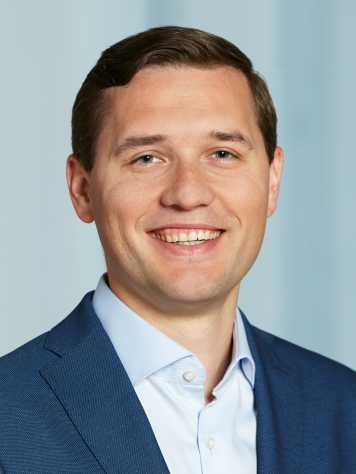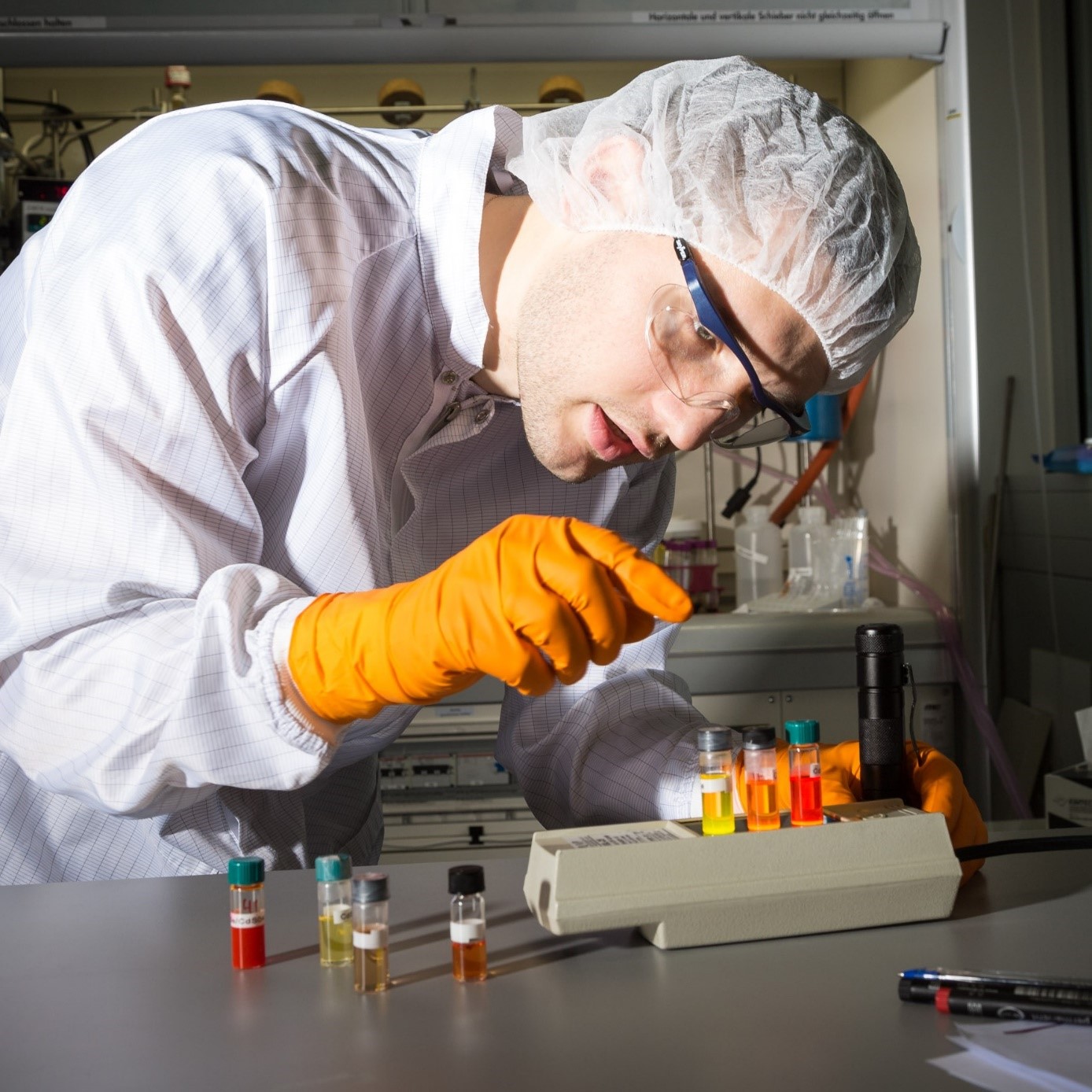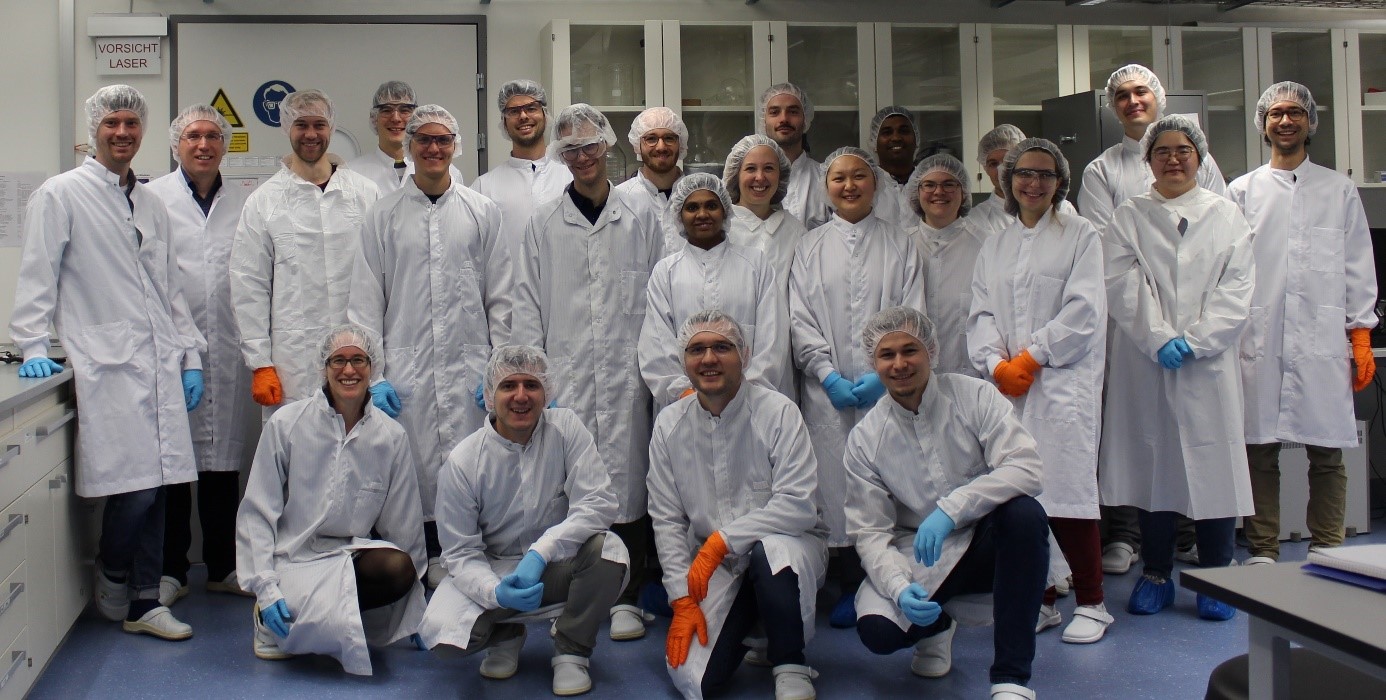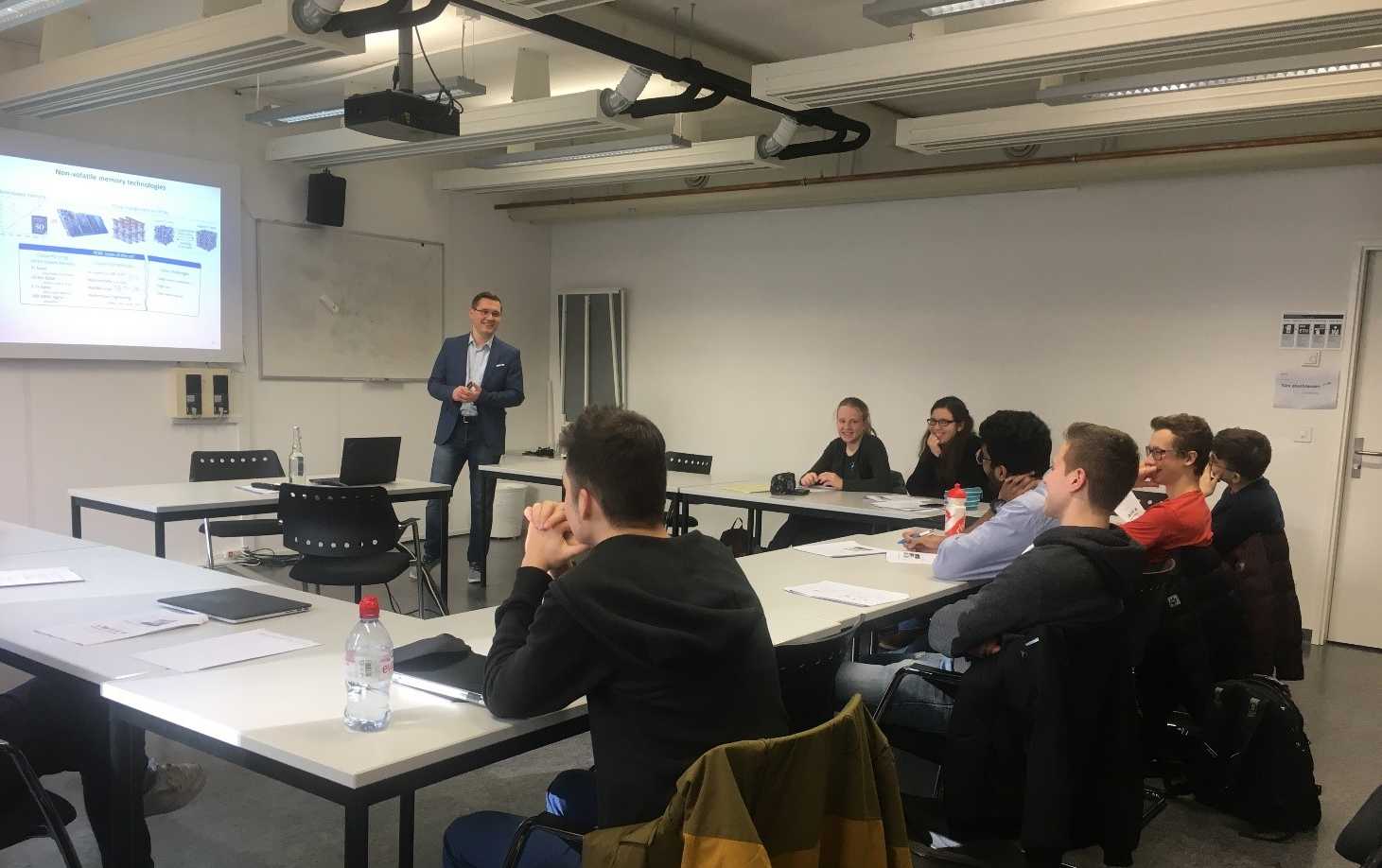“I see a lot of synergy between electrical engineering and chemistry”
Maksym Yarema, leader of the Chemistry and Materials Design (CMD) group, a newly established laboratory at the Institute for Electronics, received an ERC Starting Grant in 2019. In our interview Prof. Yarema speaks about the fascination of nanomaterials and his learnings during the Corona lockdown.
Prof. Yarema, What is your main area of research?

I would describe it as a mixture of Materials Science and Chemistry. We are focused on making materials with very tiny dimensions, such as semiconductor and metallic nanoparticles. Our goal is to employ them as building blocks for various efficient devices, engineered via bottom-up liquid-phase fabrication approaches. This way, we would like to improve existing technologies and to enable new functionalities.
What brought you to this field?
As many things in our lives, it all started during the childhood. Thinking back, I have been surrounded by a lot of creativity because my parents are both musicians. They always gave me a choice and I picked on math and chemistry very early. I was then so lucky to have not just one, but many great mentors who shaped my academic self. Starting from my grandpa Maksym, always saying that knowledge is key to success; then my chemistry teacher at school, allowing me into a real lab; my happy student times and first research in Ukraine and Austria and finally I had great postdoc supervisors here at ETH Zurich. They all influenced me and expanded my knowledge and skills in different directions.
What is the impact of your research on society?
Nanomaterials are becoming ubiquitous. They can be found everywhere, from widespread applications, like sun protection products or paints, to high-end technical applications in medicine or in devices. As an example, here in my office, I have a quantum-dot display. These quantum dots, also known as nanocrystals, are small chunks of inorganic material, just a few hundred or a thousand of atoms altogether. We synthesize and study these quantum dots in our institute, focusing on complex chemical compositions. The structure complexity at the nanoscale is truly fascinating! For example, we can prepare very ordered nanocrystals, which is superior for their emission properties. Or, on the other hand, we can make nanoparticles with no crystalline order and use them for phase change applications.
Currently we are focusing on two new directions in our lab: memory and catalysis. For memory applications, we see a potential to get ultrasmall but still reliable memory devices. For catalysis, we benefit from a large surface-to-volume ratio in nanocrystals. In both cases, we are interested to learn the link between structure and performance of materials.
““Nanomaterials are becoming ubiquitous. They can be found everywhere, from widespread applications, like sun protection products or paints, to high-end technical applications in medicine or in devices.””Prof. Maksym Yarema

What are currently the biggest challenges in your field of research?
The research on nanoparticles is getting more mature right now. It is not enough anymore to just make materials or devices, but it is required to add deeper understanding of their properties so to explain why certain materials behave and work the way they do. We need to blend chemistry with experimental physics, engineering, and computations to get clearer answers.
In the fall semester, I will teach a practical seminar course on phase-change materials and memory devices (PCMs), a rapidly developing field. Phase-change materials are capable to switch reversibly between two structural phases with distinct electrical properties. The PCM technology is currently the closest contender to mainstream silicon-based memory. It also features unique characteristics, such as non-volatility at high temperature, multibit storage and brain-mimicking computing capabilities. Another important feature of PCM devices is that their performance can be modified by the chosen material. Thus, we can choose to make faster but more volatile memory, approaching dynamic RAM, or slower but more reliable storage class memory, approaching Flash SSDs.
Are you collaborating with other people at D-ITET or other departments at ETH Zurich?
I came to D-ITET in 2013 as a post-doctoral researcher, so over the years I have built a network of collaborations within the department. I have multiple co-operations with Prof. Vanessa Wood since we are both part of the Institute for Electronics. I also had a couple of common projects with Prof. Mathieu Luisier, whose research focuses on computational nanoelectronics, and I have interesting exchanges in the field of photonics with Prof. Juerg Leuthold and Prof. Lukas Novotny, e.g. about the interaction of light with nanomaterials. I am very much looking forward to expanding the collaboration network within D-ITET even further.
In the area of catalysis, I co-operate with Prof. Christophe Copéret from D-CHAB, who is an expert in molecular materials and surface chemistry. Also, I do not miss an opportunity to exchange with my former supervisor, Maksym Kovalenko, D-CHAB, who became a Full Professor of Functional Inorganic Materials recently, and with other fellows of the Swiss Chemical Society.
How do you feel as a chemist at the Department of Information Technology and Electrical Engineering?
I see a lot of synergy between electrical engineering and chemistry. These two domains of science are somewhat disconnected now. Generally speaking, while chemists focus on materials development and stop there, electrical engineers often start with already made devices or circuits. So there is an apparent gap, a missing link between materials and device performance. It becomes especially important when it comes to novel technologies and device configurations. All these questions, like “Why do these devices work or why don’t they, can they be improved, etc.?” can often be answered by the materials choice and synthesis. So yes, I don’t really consider myself as a stranger at D-ITET (laughs). In fact, I feel a strong complementarity of my research area to those of other D-ITET colleagues and I hope to be helpful for other research groups and D-ITET students, regarding chemistry and materials aspects of electronic devices.
I’d also like to mention here that I teach a new course, Chemistry of Devices and Technologies, during the spring semesters. This course focuses on electrical engineering students, who can learn useful chemistry knowledge for them. One of the goals there is to look at various technologies from a materials point of view. We establish so-called structure-property-performance relationships in the classroom; get practical skills in the lab; and pick on state-of-the-art technologies as individual projects. Students seem to like this threefold approach.
How do you like ETH as a research institution?
For me, ETH Zurich is one of the best research institutions in the world. We have a great infrastructure and one can find literally any equipment one wants. Another important pillar for the success of ETH is, of course, the students, who are amazingly smart and creative at the same time. ETH does its best to cultivate these young talents, offering great up-to-date courses and innovative teaching approaches. Last but not least, Switzerland is a great country, very balanced in all regards. People are socially active, smart, and they do a lot of sports. In my opinion, it is one of the best places to live and work.
How international is your group? Are you currently looking for doctoral students?
I started as an Assistant Professor about half a year ago. Just before the lockdown, I was able to hire one doctoral student. He is from India and I am from Ukraine so I may say that my group is very international right now (laughs). We will soon resume the hiring process and we hope that the Corona pandemic will not delay the so much needed reinforcement to our research group. We are also welcoming Master’s and semester students from D-ITET and other departments if they are interested in our interdisciplinary scientific approach.
During the lockdown due to COVID-19, you and your group certainly had to face other major challenges. Could you describe them to us? Will these experiences have a lasting effect on teaching?
We typically perform a lot of experiments in our physics, chemistry, electron microscopy and characterization labs, so yes, we were of course affected by the lockdown and had to stop our experimental activities for more than two months. However, we should always stay positive because every change is an opportunity. For example, we were able to spend more time on data analysis and to finalize some old paper drafts. Out of necessity, online platforms, like Zoom or Slack, soon became very normal. In teaching, I personally discovered for myself some new interactive tools, such as Slido or Mural, which turned out to be very efficient and helpful for interacting with the students and colleagues. I am convinced that some of these new habits and skills will stay with us even after Corona times. However, I still hope that classroom teaching will be possible during next semesters. Having a live audience of students is so much more fun than giving online lectures!


